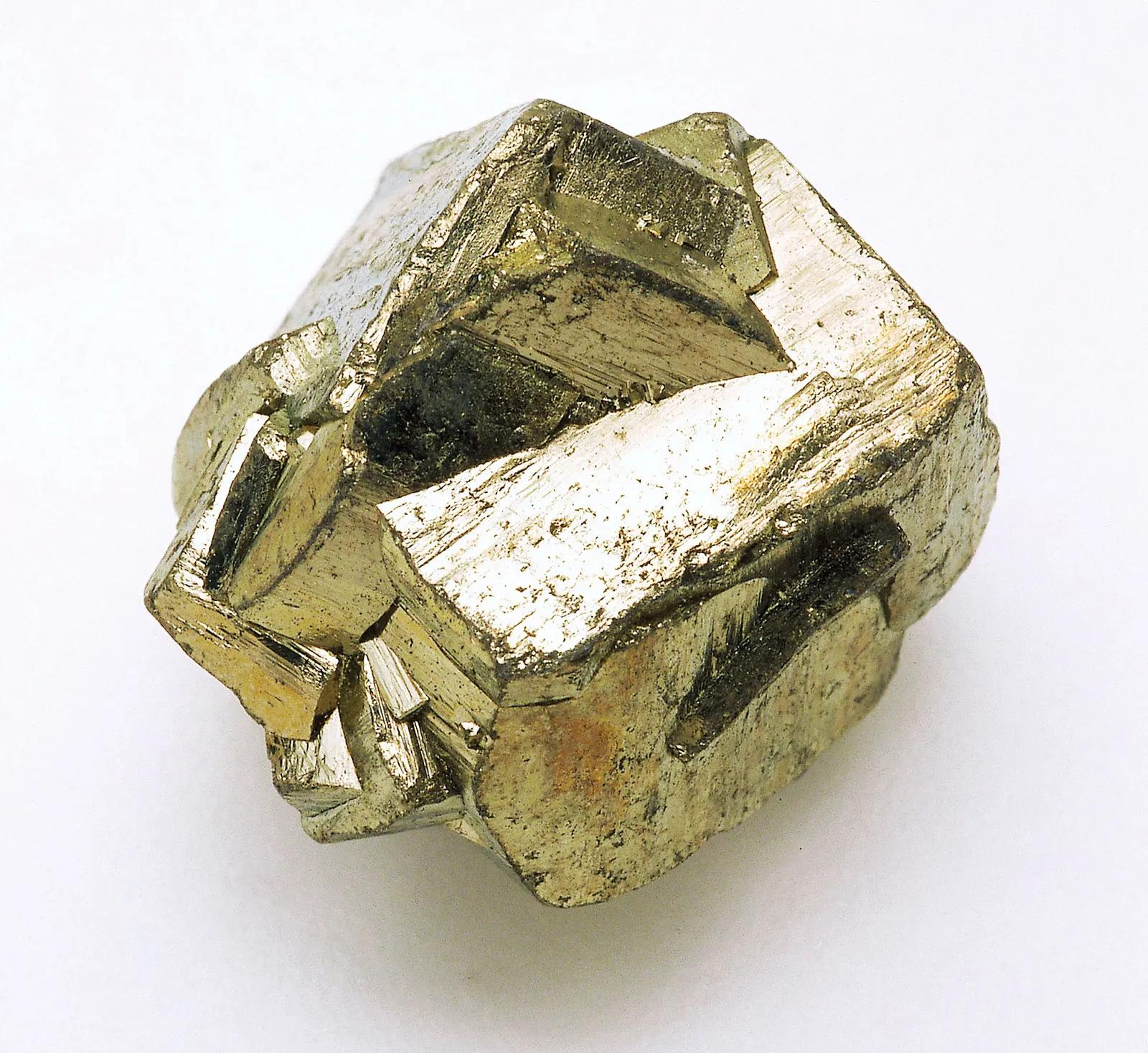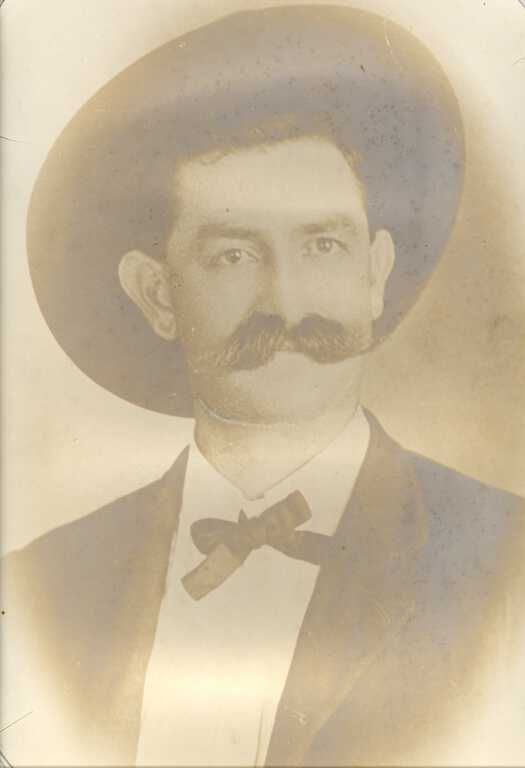The Riches get Richer
Pyrite and the Canton Copper Mine by Bruce Baker
While many folks know about gold mines in Cherokee County, the story of the Rich Mine, located within the city limits of Canton, is much less famous. A failed copper mine, it nonetheless had a twenty-year production run providing a key resource in the manufacture of gunpowder. It’s the story of how brothers William and Herman Rich, cousins of the Rich Department Store family in Atlanta, managed to turn Fool’s Gold into real gold.
Fool’s gold, also known as pyrite, consists of iron sulfides. But iron ore, required in the production of steel, consists of iron oxides (magnetite, hematite, et al) and not sulfides, so pyrite has a somewhat deserved reputation as worthless despite its shiny, bright appearance. While the metal content of many other sulfides, such as copper sulfide, is valuable enough to warrant extraction to retrieve the metal, pyrite does not. Pyrite is a good source of sulfur for use in the manufacture of high explosives though, and so war can create a considerable market for sulfur (also called brimstone, or “burning stone”).
Image: Pyrite

But there’s a catch; the selling price of sulfur typically doesn’t support the costs of constructing, maintaining, and operating mines unless the ore deposit is immense. That is where the ingenuity of William and Herman Rich (one from Birmingham, AL, and the other from Nashville, TN) came into play.
In 1898, the United States fought the Spanish-American War. Sulfur demand for explosives had grown, and prospectors began searching for evidence of pyrites in those areas where gold and copper had previously been prospected, as these ores are often found together. The Rich Brothers became aware of a failed copper mine called the Canton Copper Mine. After assuring themselves that it had substantial pyrite deposits, they acquired it in 1900, and installed a Pickens County man named Isom Elrod on the site, to serve as Mine Manager. Abe Rich, another family member, oversaw the business for the owners, traveling from Birmingham to Canton and back frequently.

They had found the perfect place to affordably extract pyrites. The mine shafts were already dug, and were in tolerable shape, so operation and maintenance would be minimal, with the salaries of a half dozen miners and Mr. Elrod being the chief expense. Additionally, this mine had an “adit.”When a mine has its ore on high ground, a common practice is to dig a horizontal shaft at the base, which improves ventilation and allows for gravity-fed water drainage. Also, instead of always having to go up and down the vertical shafts in an elevator, you can walk in and out of the hillside, and even bring some of the ore out that way. Their business thrived as a result, especially from 1914-1918 as World War One waged on.
The guns on the Western Front fell silent on November 11, 1918; the War to End All Wars was over. Months later Isom heard a loud crash: the main vertical shaft had caved in. The sulfur market was in decline, and now operating costs would increase dramatically. It was time to quit; the hole was filled in, and the land was converted to residential housing. As thanks for Isom Elrod’s service, the Richs transferred the property deed and the house they had occupied on-site to the Elrod Family. This wound up being critical to the family’s survival, as Isom passed away shortly thereafter.
Image: Islom (Isham) Elrod, Grandfather to Dorothy Goding and foreman at the Copper Mine in Canton.
The story of how the copper mine originally came into being is also entertaining and features another pair of brothers, named S. Kid and Rev. W. F. Harris. After the gold boom of the 1840s, those miners who didn’t go to the California Gold Rush of 1849 stayed and started a copper boom in the 1850s along the Tennessee-Georgia border. By 1860, over a thousand men were working in twelve mines. In 1854, S. Kid Harris noticed rock outcrops like those he’d seen in copper mines near Ducktown, TN. A little digging on the property (which was owned by Joseph E. Brown, who was soon to become Governor of Georgia) proved encouraging, and the Canton Copper Mine was officially incorporated on December 17, 1855. Brown wanted no part of the mining speculation, opting to simply sell the land for a tidy profit.
A good amount of copper was retrieved between 1855 and 1861, and it turned Canton into a boomtown for a few years. The 1850 census shows not a single miner in Canton, but by 1860 the census records 27 miners (and not coincidentally, two prostitutes) in Canton and South Canton. It didn’t last long; the 1870 census records only one miner left in the town. The outbreak of the Civil War in 1861 shuttered the mine as the men were needed in the Confederate Army. Kid Harris joined the Confederate Army as a lieutenant and ultimately became Cherokee County’s highest-ranking officer, Colonel of the 43rd Georgia. But in May of 1863, Colonel Harris was killed in battle. By then it had also been established that the copper ore deposit was much smaller than originally hoped, and so the mine did not reopen after the war. The mine property and all equipment were sold at auction in 1868. War, which would later prove to be the impetus for pyrite extraction in Canton, had doomed the mine’s copper extraction business.
Image: Ink Drawing done by Hoy Cook of the Copper Mine in Canton, located across the street from Islom Elrod's former homeplace.

It is somewhat ironic that it was the Rich Brothers and not the Harris Brothers who prospered. Their conversion of Fool’s Gold into real gold might not qualify as Alchemy, but it was ingenious.
The Cherokee County History Center, located in downtown Canton, is a history museum that features collections from over +10,000 years of history. The newest exhibit, “Serving Up History" is all about historic foodways in Cherokee County and the importance of food in the broader South through cookbooks, recipes, kitchen implements, and food preparation practices.
